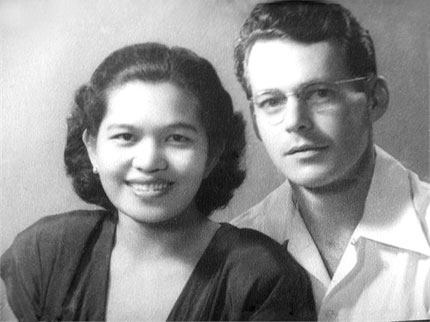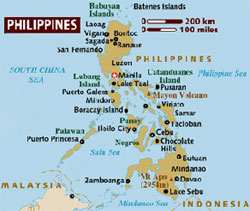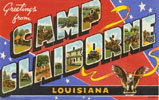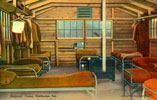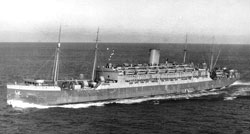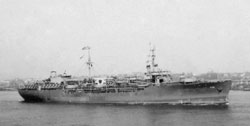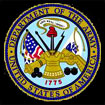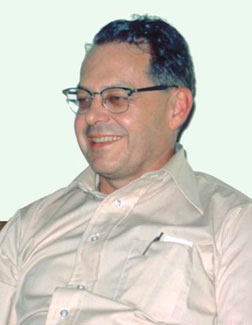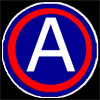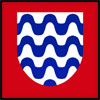| North
High School Wall of Honor Dale Leonard Gunnar Class of June, 1943 |
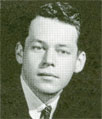 |
|||||||||||||||||||||||||||||||||||||||||||||||||||||||||||||||||||||||||||||||||||||||||||||||||||||||||||||||
| Research done by Claradell Shedd, Class of 1953. | ||||||||||||||||||||||||||||||||||||||||||||||||||||||||||||||||||||||||||||||||||||||||||||||||||||||||||||||||
| Dale Leonard Gunnar | ||||||||||||||||||||||||||||||||||||||||||||||||||||||||||||||||||||||||||||||||||||||||||||||||||||||||||||||||
| Dale was a member of North High's class of June, 1943. His next of kin was Mr. Charles Kingsley Gunnar who lived at 3301 59th Street, Des Moines, IA. Dale's service number is 37680546. | ||||||||||||||||||||||||||||||||||||||||||||||||||||||||||||||||||||||||||||||||||||||||||||||||||||||||||||||||
|
||||||||||||||||||||||||||||||||||||||||||||||||||||||||||||||||||||||||||||||||||||||||||||||||||||||||||||||||
| *Camp
Claiborne, LA. Camp Claiborne was a U.S. Army military camp during
World War II located in Rapides Parish in central Louisiana. The camp
was under the jurisdiction of the U.S. Eighth Service Command, and included
23,000 acres (93 km²). The camp was just north of the town of present day Forest Hill, near the intersection of U.S. Highway 165 and Louisiana Highway 112. Just west of Melder, Louisiana. The camp was just south of Alexandria, Louisiana. It was established June 10, 1930 as Camp Evangeline, named for the Evangeline District of the Kisatchie National Forest where it was situated. It was later renamed for the Governor of the Territory of Orleans and first governor of the State of Louisiana, William C.C. Claiborne. In 1939 construction crews were sent to expand the camp and it was activated in 1940. From 1939 to 1946 over half a million men went through Camp Claiborne. The camp was mainly used for basic training and artillery practice, which included the nearby Winn District-Kisatchie Precision Bombing Range. It was also home to the Engineering Unit Training Command(EUTC) and special service forces training was also conducted there, including railroad battalion training. The 34th Infantry Division (United States) came to Claiborne for its basic training and would be the first American force sent to the European Theater of Operations (ETO). In 1941, prior to the United States declaring war, the camp was part of the Louisiana Maneuvers, a 400,000 man training exercise involving two imaginary countries fighting each other. The two armies faced each other across the Red River, over 3,400 square miles (8,800 km2) of land, including part of East Texas. Near the end of the war German prisoners of war (POW) were held at the camp. For many of the men, like the ones from the 34th Infantry Division, who were from Iowa, Minnesota, North Dakota, South Dakota, and Wisconsin, they had never been to the south. Not only did they have to get used to basic training, they had to get used to the climate of Louisiana. The camp was deactivated in 1945 and returned to Kisatchie National Forest, as part of the National Forest System, administered by the U.S. Forest Service. **USAT Edmund B. Alexander (U.S. Army Transport) Originally America (German Passenger Liner, 1905) Served as USS America (ID#3006) in 1917-1919 and USAT America in 1919-1921. In late 1940, as part of the National defense expansion undertaken in response to the Second World War, the thirty-five year old passenger liner America (formerly USS America (ID 3006) and USAT America) was reactivated for U.S. Army service. Renamed Edmund B. Alexander, she initially served as a barracks ship at St. John's, Newfoundland. After mid-1941 the ship was used as a transport in the Gulf of Mexico area and in May 1942 entered a Baltimore, Maryland, shipyard to begin a major modernization. This work, completed in April 1943, gave her new, oil-fired boilers, greater speed, and a much-changed appearance. Edmund B. Alexander spent the rest of the World War II era making transport runs between the United States, North Africa and Europe. She continued her work with the Army into the post-war era, primarily carrying military dependents. Placed in reserve in May 1949, USAT Edmund B. Alexander was sold for scrapping in January 1957. ***Camp Lucky Strike was situated in the town of Saint-Sylvian, 5 kilometers from Saint-Valery-en Caux. Its location was not selected by chance, but rather because the occupying German troops had constructed an airfield there in 1940 with a landing strip 1800 meters long and 50 meters wide. This airfield was one of the defensive elements of the Atlantic Wall: surveillance and coastal defenses were also a perfect starting point for attacks on southwest England. V-1 rocket launching ramps were installed at the beginning of 1944 in the woods surrounding the airfield. It was heavily bombed by the British throughout the war, but especially during the fighting which followed the June 1944 landings. In September 1944 American Engineer Corps troops took control of the area, repairing the landing strips and constructing the camp. The camp became the most important military camp in Europe. It extended over 600 hectares (1 hectare = approximately 2 ½ acres). It was a mandatory port of entry for practically every American soldier, and 1½ million spent from a couple days up to 18 months there. It was the principal camp used for repatriated soldiers and liberated POWs, but also as a reception station for soldiers on leave. It was also a staging area for the Pacific Theater and — until August 10, 1945 — for the invasion of Japan. There were 100,000 men in the camp each day — 100,000 men to lodge, feed, train, and entertain. (Regarding repatriation, there were 6,000 daily departures by plane or boat from Le Havre, the only port liberated on the western coast that could accommodate large ships.) |
||||||||||||||||||||||||||||||||||||||||||||||||||||||||||||||||||||||||||||||||||||||||||||||||||||||||||||||||
|
||||||||||||||||||||||||||||||||||||||||||||||||||||||||||||||||||||||||||||||||||||||||||||||||||||||||||||||||
|
||||||||||||||||||||||||||||||||||||||||||||||||||||||||||||||||||||||||||||||||||||||||||||||||||||||||||||||||
|
||||||||||||||||||||||||||||||||||||||||||||||||||||||||||||||||||||||||||||||||||||||||||||||||||||||||||||||||
|
||||||||||||||||||||||||||||||||||||||||||||||||||||||||||||||||||||||||||||||||||||||||||||||||||||||||||||||||
|
||||||||||||||||||||||||||||||||||||||||||||||||||||||||||||||||||||||||||||||||||||||||||||||||||||||||||||||||
| 08/21/10. Died 08/24/07. | ||||||||||||||||||||||||||||||||||||||||||||||||||||||||||||||||||||||||||||||||||||||||||||||||||||||||||||||||
| Music: "Wind Beneath My Wings" | ||||||||||||||||||||||||||||||||||||||||||||||||||||||||||||||||||||||||||||||||||||||||||||||||||||||||||||||||
| Home
|
Back/allyears |
WWI |
WWII |
Korea |
Vietnam |
Afghanistan/Iraq |
Lyrics
|
Refs/Awards |
Contact ©2018-csheddgraphics All rights reserved. All images and content are © copyright of their respective copyright owners. |
||||||||||||||||||||||||||||||||||||||||||||||||||||||||||||||||||||||||||||||||||||||||||||||||||||||||||||||||

